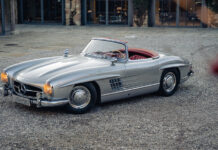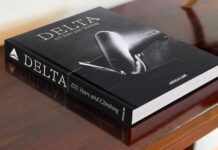Well known for always seeking an ‘unfair advantage’, it was a level playing field that Roger Penske was after when he created the International Race of Champions (IROC) in 1973. The plan was to pitch the very best drivers in the world against each other in identical machines. To that end, he commissioned Porsche to build fifteen 911-based racers. Having dominated Can-Am together, Porsche was an obvious choice for Penske The German company’s chairman Ernst Fuhrman had also promised that the 911 Carrera RSR would be virtually indestructible.

Penske needed the cars towards the end of 1973, which meant that the development of the IROC racers fell right in the middle of Porsche’s 1973 and 1974 racers. Based on the successful Carrera RSR 2.8 racer, it effectively offered a preview of the upcoming three-litre production and competition cars due to be offered from the start of 1974. The engine fitted was carried over from the RSR 2.8s campaigned by the factory during the 1973 season. These had already been upgraded with a three-litre version of the familiar six-cylinder engine, which produced 316 bhp.
Its bodywork reflected the change in the 911 road car design, which saw the introduction of more pronounced bumpers. When the cars left the factory, they were still fitted with the ‘Ducktail’ engine covers as used on the 2.8 RSR. The factory had experimented with several different solutions to get more downforce at the tail of the car throughout the 1973 season. The result was a more substantial wing that was still integrated in the engine cover. The new design was shipped to the United States before the race, and as such, the IROC car was also the first Porsche to sport what would become the famous ‘Whaletail’.
Always a keen marketeer, Penske had ensured that the IROC races would be televised. To make the cars easily recognisable, he had Porsche painted them in very bright and striking colours. Among the drivers signed up to compete in the International Race of Champions were the likes of Formula 1 World Champions Denny Hulme and Emerson Fittipaldi and American racing stars like AJ Foyt, Bobby Unser and Penske’s own Mark Donohue. To avoid the latter gaining that infamous unfair advantage, Penske had asked his driver to stay out of the development of the IROC cars, and like his rivals, he did not drive his allocated 911 Carrera RSR until the first practice.
The first IROC featured four rounds, three of which were held at Riverside towards the end of October, 1973. The final race was held at Daytona in January of 1974. These dates coincided with the Can-Am and Daytona 24 Hours, which meant that all the top drivers would be at the venue anyway. Despite keeping his distance, it was Donohue, who would go on to win the first and third race. Victory in the second race, which featured a reverse-order grid, was for his former Penske team-mate George Follmer. The top six drivers then qualified for Daytona where a lot drawing saw the cars allocated. Donohue was on top form again, winning the race from pole position. He was the first IROC champion.
For the next edition of the IROC, the organisation switched to Chevrolet Camaros. The IROC Porsches were sold and many of them competed in the IMSA GT Championship. With just fifteen examples built, they are among the rarest Porsche competition cars and hold the distinction of being the first three-litre 911s sold by the factory and also the first to be equipped with the ‘Whaletail’ engine cover.
Report by ultimatecarpage.com










